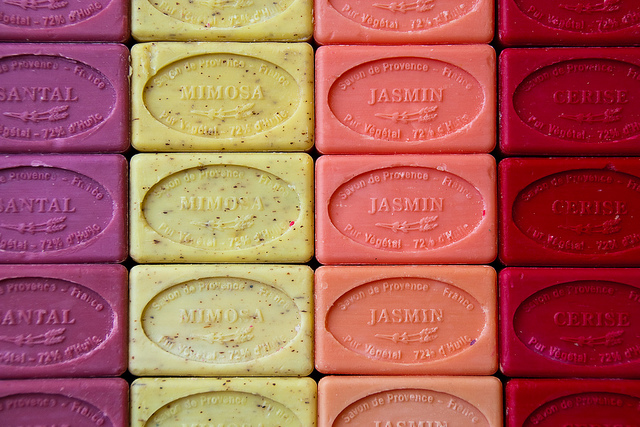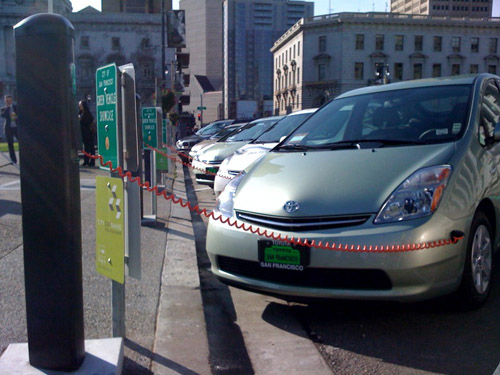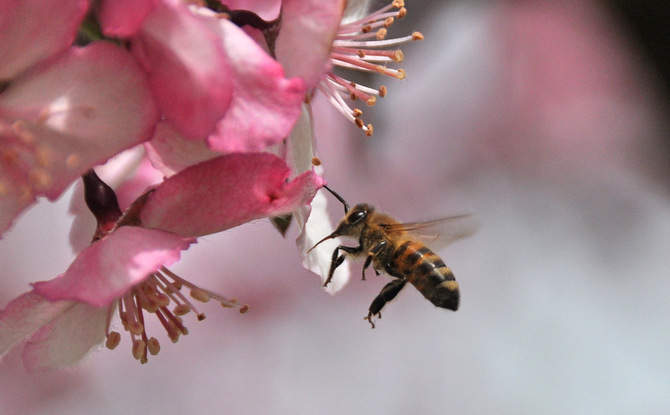
A box of soap that dissolves in the shower? A pod of detergent you can toss in the washing machine? While big brand names are trying to make their product packaging bolder and brighter, one man is trying to make it disappear.
Earth911 reports about the intriguing project launched by Aaron Mickelson, the man who might one day be behind a new revolution in sustainable packaging. In his master thesis project at the Pratt Institute, Mickelson addressed the challenge regarding the huge amounts of packaging waste that the modern package design industry generates.
According to the project’s site, Americans alone throw away 140,000,000,000,000 lbs or a rough equal of 70 million tons of packaging waste every year. A considerable bulk of that takes up space of landfills, but what about tons of packaging trash that end up somewhere else and affect the environment? It’s clear that massive consumption of industrialized products cannot be limited in any significant way, but if the products’ packaging can somehow be minimized the difference could be monumental.
Mickelson’s project is unique in that it not only reduced the amount of packaging waste but completely eliminated it…in a way this is a for of precycling. For his project, aptly titled The Disappearing Package, Mickelson chose five household consumer products and redesigned their packaging. Each re-design was conceptualized without any financial backing, input, or approval from the companies who owned the product brands. Click each brand name to see the actual conceptualization in The Disappearing Package site.
Tear-me-Up Tide pods: Mickelson redesigned the original laundry detergent’s packaging from a flexible plastic bag containing the pods to a sheet of perforated pods stitched together. No need for an extra layer of packaging as the whole sheet is printed using soap-soluble ink, similar to soap dyes. All the user has to do is to tear off one pod at a time from the sheet and toss it in the washing machine. As all parts of the packaging are soluble, nothing remains after the last pod is used. Current packaging design using plastic bags generate 1,450 lbs of waste per truckload.
For every redesign, Mickelson uses an insignia to identify it as a Disappearing Package. Aside from building product recognition, the insignia also gives clear instructions on how to properly use the product. The insignia for this product is Tear-me-Up, which reflects the elimination of packaging waste by tearing up the package as pods one by one.
Wash-me-Off OXO Pop containers: At present, OXO sells its products inside a reusable plastic container with a glossy paper slip containing product information inside. While the reusable plastic container is undoubtedly functional, the glossy paper serves no further purpose and is thrown away. Mickelson does away with the paper and instead screen-prints the information on the plastic container itself using soap-soluble ink. As people usually washes plastic containers before use, the new packaging requires no extra effort (or water resources). Current packaging design using paper generates 500 lbs of waste per truckload.
Mickelson defers to the original printing technique OXO used by printing all product graphic and info text in solid, single colors. The ink used for the printing is safe both for septic and general environment.
Tear-me-Up Twinings Tea bags: Currently, Twinings sells its tea bags in sets inside heavy paperboard boxes sealed in plastic. Mickelson redesigned the product packaging from its traditional box to an accordion-style arrangement of tea bags. The tea bags are stitched and impermanently glued together into a folded, self-supporting brick. The consumer tears off a paper folder containing a tea bag until the whole set is used up, leaving no box or plastic to throw away. While the new design still leaves packaging waste, it beats the current design which generates 2,646 lbs of paper and plastic waste per truckload.
Mickelson proposes an extra advantage for the manufacturer by offering up more printing space on the surface of the storybook-style packaging.
Wash-me-Away Nivea Bar soap: For the conventional single-use heavy paper carton that houses bar soaps, Mickelson used a septic-safe, water-soluble paper packaging instead. Users can do away with soggy carton boxes and simply take the entire product (in this case, Nivea bar soap) with them in the shower. There the packaging dissolves and goes down the drain, leaving only the soap behind. The product is shaped intentionally to remind absent-customers not to tear it out. Current packaging design using paper cartons generates 3,950 lbs of waste per truckload.
As with the soluble ink used on OXO, the redesigned soap soluble Nivea paper packaging is safe for septic and the environment.
Take-me-Last GLAD Trash bags: As with the other Disappearing product packages, the redesign for GLAD trash bags completely takes any extra material packaging out of the equation. Mickelson used oil-based ink to print product logo and information on the last trash bag on the roll, which becomes the packaging itself. The trash bags are pulled out one at a time from the center of the roll, until the last one with the print is finally used. Current packaging design using an extra layer of paper generates 3,334 lbs of waste per truckload.
It might be noted that the existing packaging design for the products already implement a sense of sustainability in some ways. Marketing products in mass quantities, minimal use of disposable plastic (compared with other brands), and use of paper-based packaging are already improvements on the flaws of unnecessary retail marketing and heavy plastic-based packaging. Yet the concepts presented in The Disappearing Package clearly shows there is plenty of room for improvement.
Mickelson shared in the Earth911 article that the designs in The Disappearing Package were a result of his two passions: environmentalism and innovative packaging. While he admits there are several manufacturing and distribution challenges to be dealt with before his ideas can be implemented in large-scale markets, he also said his thesis was an attempt to stir conversation about sustainable packaging. If Mickelson’s project becomes successful, his interesting redesigns will surely stir more than conversation in both industry manufactories and ordinary households.





Leave a Comment